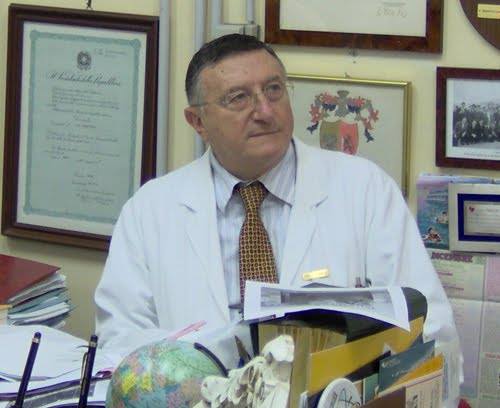 Share on Facebook
Share on Facebook
 Prof. Dott. Giulio Tarro Phd MD
Prof. Dott. Giulio Tarro Phd MD
After the first “white” book on "Health and Environment in Campania" (1977), there is a clear worsening of the environmental and health conditions of citizens. Illegal waste removal of toxic waste has led to an increase in tumor and malformation at birth (Campania, Land of Poison, 2012). Not always all the substances contained in illegal waste rubbish are known, but the presence of some of them outlines the inevitable carcinogenic effectsc (1).
Although there is no cancer record for the mapping of cancer cases in the area that can identify a correlation between the incidence of cancers and genetic / environmental cases (see mesothelioma), exposure to mutagenic carcinogenic substances (causing changes In the germ DNA) creates genetic damage through the malfunction of the gene switches, which is transmitted immediately to the next generation. Of all this, epigenetics is now being treated as a new key to tumor growth (2).
More recently, following the publication of Campania, Land of Poison, another paper was published in the Journal of Clinical and Experimental Cancer Research, on the incidence of Cancer in Campania, by improving the methodology of the previous study published in the same journal and extending the observation time until 2008, confirmed the significant increase in the number of breast tumor quadrantectomies and reported an increase in those between 25 and 39 years and between 40 and 44 years, ie in pre-screening age (3).
At the end of 2013, a work by the Pascale Foundation on the mortality trend between 1988 and 2009 was published in the metropolitan areas of Naples and Caserta, where epidemiological data show a percentage increase in pulmonary cancer 68% for Caserta, more than 100% for Napoli compared to the "only" 41% increase for Italy. The regression analysis shows that the percentage increase in tumors is 28.4% for men in Caserta and 47% in Naples, while for women it is 32.7% and 40%, respectively (4).
So, you can respond positively to the questions about the incidence of cancer and mortality in Campania, being higher than the Italian average. Of course, there is a scientific rigor and a map of polluted sites. We know of numerous carcinogens present with added dioxin-related pollution, but the biggest danger is the pollution of the aquifers associated with illicit spills (heavy metals) (5).
After several interventions on the correlation between environmental pollution and cancer and the unsatisfactory answer to the question of the increased incidence of cancer related to the disposal of toxic waste, widely demonstrated by scientific publications, we must point out that the situation of the rest of Campania is no different from the one present in the land of fires (Naples and Caserta) (6).
Recently, the risk associated with exposure to asbestos has returned, and the Avellino Chemistry has been analyzed with the aim of reclaiming it to prevent contamination by asbestos by other people. The scientific community was aware of the dangers of asbestos and both politicians and entrepreneurs were aware of their risks. In spite of all, the worker was considered to be a living being at the service of companies to which only his own account was important.
There are now extraordinary measures for preventing and combating the phenomenon of the abandonment of waste and the related swamps that impose a free screening on environmental illnesses for populations resident in areas affected over the past five years through local healthcare companies. In the technical and financial report, it should be noted that there is an initiative in line with the WHO directives which seek to know and cure diseases that fall under "environmental illnesses" on the medical and scientific level. Among other things, these important aspects of the law on poison land counteract the undoubted savings in the costs of managing the health care expenditure that will be burdened with the late care of cancerous and epidemiological diseases that delayed diagnosis then require treatment health-care costs that are more expensive than those prevented (7).
The only possible solutions in 2014 are those already identified with foresight in the first white book of about 40 years ago based on the first prevention and reclamation afterwards. In Texas, for example, since the land consolidation work began, malformations decreased by 40%. Consequently, it could have a profound effect on remediation, reducing congenital malformations in only 4 years of 25%, even reaching an economic savings of 11 million euros.
However, it is necessary to keep in mind that to continue the battle begun years ago with the complaint about "Environment and health in Campania" (1977) and recently continued with "Campania, land of poisons" (2012) the reclamation of territories must first be preceded by the reclamation of consciences (8).
References
- Giordano A, Tarro G: Campania, terra di veleni. Denaro Libri, Luglio 2012.
- Kathryn S, Mazza A: Triangle of death linked to waste crisis. The Lancet Oncology. 2004; 5, 525-527.
- Barba M, Mazza A, Guerriero C et al. Wasting lives: The effects of toxic waste exposive a health – The case of Campania, Sothern Italy. Cancer Biology and Therapy. 2011; 12: 106-111.
- Crispo A, Barba M, Melvezzi M et al: Cancer mortality trends between 1988 and 2009 in the metropolitan area of Naples and Caserta, Southern Italy. Results from a join point analysis. Cancer Biology and Theraphy. 2013; 14: 1113-1122.
- Tarro G F, Minguzzi R, Verzella: Toxic metals and autism. Theory Clin. Pract. Pediatr., 2017, 1 (1).
- Marfè G, Di Stefano C: The evidence of toxic wastes dumping in Campania, Italy. Ben. Oncol/Hematol, 2016; 105: 84-91.
- Tarro G, Altucci P: Medicine and life perspectives. MEDIC 2016, 24 (2): 51-57.
Tarro G: Salute e ambiente in Campania una ricerca aggiornata nella “terra dei veleni”. Politica Meridionalista. 2015; 43: 18-20.


